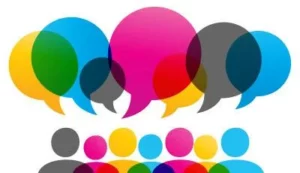 I have long been aware that, at the deepest personal level, each of us is living in our own reality. This was driven home to me when I was practicing homeopathy part-time for a couple of years. An important part of the homeopathic process is for the patient to share with the practitioner, not only their physical symptoms, but their complete emotional state, their entire life story. This information is then used to select their best-fitting remedy.
I have long been aware that, at the deepest personal level, each of us is living in our own reality. This was driven home to me when I was practicing homeopathy part-time for a couple of years. An important part of the homeopathic process is for the patient to share with the practitioner, not only their physical symptoms, but their complete emotional state, their entire life story. This information is then used to select their best-fitting remedy.
An initial homeopathic-intake interview can take several hours. For the patient, this interview alone can be cathartic and relieving. For the practitioner, receiving this information is invariably like being given a peek into a wholly different existence, the unique view of life being experienced by the individual. After such an interview, I often came away thinking — “Wow! It’s amazing that our society hangs together! Everyone is walking around with a completely different perception of reality!”
Of course, it’s easy to see that people from completely different parts of the world, with strongly differing religious backgrounds, or living in extremely divergent economic situations, will have different views and experiences. But in general, we assume that the people we come into contact with day-to-day are on the same page as we are, more or less.
Somehow, though, this assumption seems to be breaking down. Perhaps the most glaring sign of this, at least recently, is among the American electorate. Those who support or oppose President Trump’s agenda seem to have a completely different perception of what’s true or false. The phrase “alternative facts” has become a meme, a symbol, of this phenomenon. And perhaps the biggest driver of this state of affairs is the internet. With a bottomless supply of information created and shared each moment — information that is targeted specifically to the very people who will agree with it and spread it around some more — it’s easy to see why this is happening. Gone are the days when Walter Cronkite or Chet Huntley and David Brinkley told us all what was happening, what “the facts” were.
As a writer of fairly “alternative” content (both about consciousness and health), I experience reality dissonance pretty frequently. In general, I’m okay with it. I know my views about many things differ from those of my neighbors and most of my friends. But I must admit, it still rattles me when haters come out of the woodwork.
I recently had a “hater” experience when I was slowly baited by a parent of an autistic child over a series of emails. He claimed to be confused about what to do about vaccinations and about their possible dangers (something I often write about), and he kept asking me a series of short clarifying questions. When he got enough ammunition, I was hit with a threatening barrage of anger and insult.
It’s at moments like this when I am thankful for my meditation practice. I knew immediately that I had to do some work to regain my equanimity and to view my experience with this man as one for learning. I needed to let go of my own anger and fear. And the experience certainly did underscore the fact that this man was living in a different reality than I was. In fact, it was the inspiration for me to write this article.
What to do about this growing breakdown in consensus reality? Will society ultimately break apart? Is the ultimate endpoint of this splitting, a world in which each person exists in a solipsistic reverie, wearing his or her virtual reality headset? Or is this state of affairs a harbinger of the transition to a wholly new world, a world in which people recognize their interconnectedness and oneness, despite differences in opinion? Certainly, I hope the latter is true.
Whatever the outcome, we do need to deal better with this conundrum during our day-to-day interactions with others. Perhaps the best advice I can relay to you is to watch this short video by Charles Eisenstein. In it, he recommends that, when confronted with someone’s different and challenging viewpoint, simply ask yourself “What is it like to be you?” (i.e. that other person). In other words, take the time to view him or her as a real person (not “the enemy”), someone you would actually agree with or behave like, if you came from the same situation as them.
This approach, at the very least, creates a bridge of understanding. It is a path forward. And even if the bridge is not a two-way street (as in the case of my recent hater experience), this exercise can create clarity and a better state of mind. It’s a beginning. It’s a way forward to a better outcome — a world in which we acknowledge our common humanity and interconnectedness, despite our differences.



